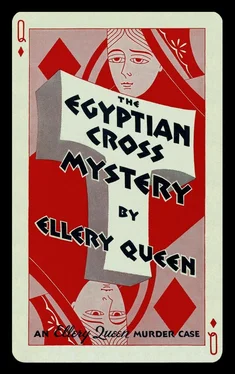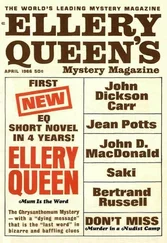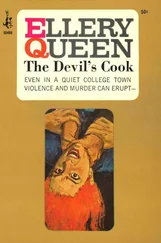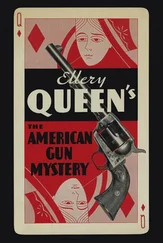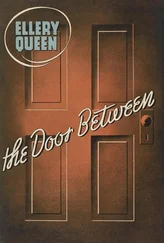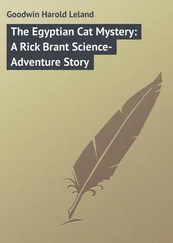He shrugged again.
Colonel Pickett stepped into the breach once more. “Maybe I’d better tell it, Mr. Stapleton, and expedite the business of the inquest. Krosac’s always kept himself under cover, as far as we could find out. Couple of years now that he’s been with this man. Mysterious sort of fellow. Acted as business manager and advertising agent, sort of, letting Harakht here take care of the hokum. Harakht picked him up out West somewhere. The last time Krosac was with Harakht was Christmas Eve. They’d been camped up near Holliday’s Cove” — a few miles from Weirton; Ellery remembered certain signposts. “Krosac went off around ten o’clock or so, and that’s the last What’s-His-Name claims to have seen of him. The times match, all right.”
“You’ve found no trace of this Krosac?”
The Colonel looked irritated. “Not yet,” he snapped. “Disappeared as if the earth swallowed him. But we’ll find him. He can’t get away. We’ve sent out descriptions of him and Kling.”
“Harakht,” said the Coroner, “have you ever been in Arroyo?”
“Arroyo? No.”
“They never got that far north in West Virginia,” explained the Colonel.
“What do you know about Krosac?”
“He is a true believer,” asserted Harakht deliberately. “He worships at the altar with reverence. He partakes of kuphi and hears the holy writings with high spirit. He is the pride and the glory—”
“Oh, all right,” said the Coroner wearily. “Take him away, Trooper.”
The trooper grinned, rose, grasped Brown-Beard’s skinny arm, and hauled him off the stand. The Coroner heaved a sigh of relief as the two disappeared in the crowd.
Ellery echoed the sigh. His father had been right. It looked very much as if he were due to return to New York, if not precisely with his tail between his legs, at least with a hangdog look about him. The entire proceeding was so insane, the affair so incomprehensible, so impervious to logic, that it hinged on farce. And yet — there was that brutally mutilated body, crucified to...
Crucified! He started, almost with an audible gasp. Crucifixion — ancient Egypt. Where had he run across that odd fact?
The inquest proceeded swiftly. Colonel Pickett produced a number of articles which he had found in Harakht’s wagon and which Harakht had said belonged to Krosac. They were inconsequential, of no value either intrinsically or as possible clues to the man’s background or identity. There had been no photograph of Krosac, as the Coroner pointed out to the jury — a fact which made the apprehension of the man even more difficult. To augment the difficulties, there were no samples available of the man’s handwriting.
Other witnesses were called. Small points were brought out. No one could be found who had had Andrew Van’s house under observation on Christmas Eve, or who saw Krosac after Croker the garagemen left him at the crossroads. Van’s house was the only dwelling in the vicinity of the crossroads, and no one had passed by that night... The spikes found in Van’s crucified body had come from his own tool box, usually kept in his kitchen-pantry. They had been purchased by Kling from storekeeper Bernheim long before, it was revealed; many of them having been used in the construction of a woodshed.
Ellery came to a consciousness of his surroundings just as Coroner Stapleton was rising to his feet. “Gentlemen of the Jury,” the Coroner was saying, “you have heard the proceedings of this inqu—”
Ellery leaped to his feet. Stapleton stopped to look around, annoyed at the interruption. “Yes, Mr. Queen? You’re interfering with the business of the—”
“One moment, Mr. Stapleton,” said Ellery quickly, “before you address the Coroner’s jury. There is in my possession a fact which it seems to me is pertinent to your inquiry.”
“What’s that?” cried District Attorney Crumit, starting from his seat. “A new fact?”
“Not a new fact, Mr. District Attorney,” replied Ellery, smiling. “A very old one. More ancient than the Christian religion.”
“Here,” said Coroner Stapleton — the audience was craning and whispering, and the jury had risen from their seats to stare at this unexpected witness — “what are you getting at, Mr. Queen? What’s the Christian religion got to do with it?”
“Nothing — I hope.” Ellery leveled his pince-nez at the Coroner. “The most significant feature of this horrible crime,” he said severely, “if I may, be permitted to say so, has not been touched upon at all in this inquest. I refer to the fact that the murderer, whoever he was, deliberately went out of his way to plaster the letter or symbol T around the scene of his crime. The T shape of the crossroads. The T shape of the signpost. The T shape of the corpse. The T scrawled in blood on the victim’s front door. All these things have been commented upon in the press — and rightly so.”
“Yes, yes,” interrupted District Attorney Crumit with a sneer, “we know all that. Where’s your fact, though?”
“Here.” Ellery stared at him hard, and Crumit flushed and sat down. “I fail to see the connection — I confess to complete bewilderment — but do you know that the symbol T may quite possibly not refer to the alphabet at all?”
“What do you mean, Mr. Queen?” asked Coroner Stapleton anxiously.
“I mean that the symbol T has a religious significance.”
“Religious significance?” repeated Stapleton.
A portly old gentleman wearing a clerical collar rose from the thick of the audience. “If I may make so bold,” he said sharply, “to interrupt the learned speaker — I am a minister of the gospel, and I have never heard of a religious significance embodied in the symbol T!”
Some one cried: “That’s tellin’ him, Parson!” and the minister blushed and sat down.
Ellery smiled. “If I may contradict the learned dominie, its significance is this: There is one cross among the many religious symbols which takes the shape of a T. It is called the tau cross, or crux commissa.”
The minister started from his seat. “Yes,” he cried, “That’s true. But it isn’t originally a Christian cross, sir. It was a pagan sign!”
Ellery chuckled. “Exactly, sir. And wasn’t the Greek cross in use by pre-Christian peoples for centuries before the Christian era? The tau antedates the familiar Greek cross by many hundreds of years. It’s thought by some to have been a phallic symbol in origin... But the point is this.”
They waited in bated silence as he paused and drew a breath. Then he leveled his pince-nez at the Coroner again and said crisply: “The tau, or T, cross is not its only name. It is sometimes called” — he paused, and concluded quietly — “the Egyptian cross!”
Part Two
Crucifixion of a Millionaire
“When a crime is committed by a nonhabitual criminal, that is the time for the policeman to watch out. None of the rules he has learned will apply, and the information he has amassed through years of studying the underworld becomes so much dead wood.”
— Danilo Rieka
And that was all. Extraordinary, incredible — but it died there. The cryptic connection which Ellery Queen pointed out to the Weirton populace deepened rather than lightened the mystery. As for himself, he could see no solution. He consoled himself with the thought that one could scarcely apply logic to the divagations of a madman.
If the problem was too much for him, it was certainly too much for Coroner Stapleton, District Attorney Crumit, Colonel Pickett, the Coroner’s jury, the citizens of Arroyo and Weirton, and the scores of newspapermen who had flocked to town on the day of the inquest. Directed by the Coroner, who sternly resisted the temptation to leap to the obvious but unsupported solution, the jury scratched its collective head and brought in a verdict of “death at the hands of person or persons unknown.” The newspapermen prowled about for a day or so, Colonel Pickett and District Attorney Crumit went about in ever slowing circles, and finally the case died in the press — a death warrant indeed.
Читать дальше
